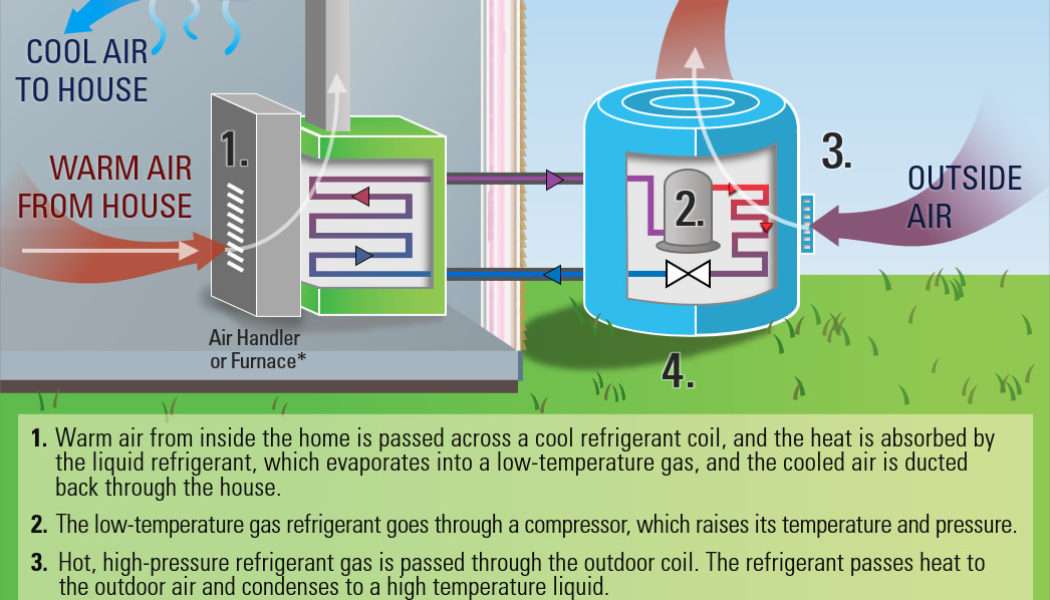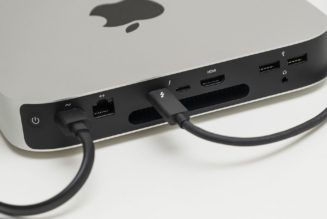The humble heat pump has finally found its moment in the spotlight. The appliance can potentially save you money on your energy bills, fight climate change, and reduce Europe’s dependency on Russian gas, proponents say. One day, heat pumps might even replace air conditioning and heating systems across the world.
Sure, that sounds super ambitious, but lawmakers are scrambling to deploy heat pumps everywhere they can. President Joe Biden invoked the Defense Production Act earlier this year to boost domestic manufacturing of the technology, and Congress crafted major climate legislation that makes it easier for Americans to afford them. Across the pond in Europe, heat pumps are part of efforts to pivot away from Russian fuels.
With all that hype, you might want to get familiar with the technology suddenly making headlines. So, The Verge put together this guide on what heat pumps are, what they do, and why they’re making such a splash now.
First off, what in the world is a heat pump?
There are different kinds of heat pump technologies, but for simplicity’s sake, we’ll focus on the appliances making the most waves right now. The appliances causing all the fuss are electric heat pumps that are used to heat and cool the air inside homes and buildings. And don’t let the name fool you. Heat pumps can do the same job as furnaces and air conditioners.
How does the thing work?
This varies depending on the type of heat pump, but the defining feature is that they move heat around to where you want it. Specifically, the appliances use a refrigerant to draw in heat and redistribute it. A refrigerant is a substance with a low boiling point that can easily absorb heat. They’re also used in air conditioners and refrigerators.
The most common kind of heat pump you’ll hear about are “air-source” heat pumps that move heat between your home and the outside air.
It’s got two parts: an indoor component and an outdoor component. When used to cool a space down, the indoor component pushes warm air from inside a space over coils filled with liquid refrigerant. The refrigerant absorbs the heat from the air, boils, and evaporates into a gas. From there, the heated up refrigerant moves on to the outdoor component, where it releases the heat. The refrigerant cools down, turns back into a liquid, and the process can begin again. When heat pumps are used to warm up a room, the process works in reverse. The refrigerant absorbs heat from outside and moves that indoors. Thanks to some relatively recent breakthroughs in heat pump technologies, this works even in cold climates because the refrigerant will absorb heat as long as it’s colder than its surroundings.
There are also “ground-source” or geothermal heat pumps that move heat between a home or building and either the ground outside or a nearby source of water.
:no_upscale()/cdn.vox-cdn.com/uploads/chorus_asset/file/23938609/AC_Op_Graphic_03_10_2021.png)
That sounds surprisingly low-tech. Haven’t heat pumps been around for a while?
Yup. Austrian engineer Peter von Rittinger designed and installed the first documented heat pump system in the 1850s. The first electric ground-source heat pump is credited to American inventor Robert C. Webber, who was tinkering with a deep freezer in his cellar in the late 1940s when he realized it produced scalding water. Not wanting to waste the hot water, he diverted that to his boiler and eventually designed a system to heat his whole home.
Even though heat pumps have been around for a long time, they haven’t become mainstream. In 2020, they only fulfilled 7 percent of global heating demand. Over the years, other technologies that many people have become more familiar with — i.e., air conditioning and furnaces — became more affordable to buy and install. In many places, it was also cheaper to heat your home with gas than electricity. Plus, heat pumps haven’t always worked as well in very cold places as they do in milder climates.
Why are we hearing so much about heat pumps now?
First off, the technology has improved. And that’s made heat pumps seemingly ideal for grappling with several crises the world faces today.
Both the COVID-19 pandemic and Russia’s war in Ukraine have contributed to a global gas crunch. It’s gotten much more expensive to heat your home with gas or rely on a gas-fired power plant to keep the lights on.
That energy crisis is really stark in Europe, where the cost of gas has risen from around $5 per million British thermal units (MMBtu) to $55 per MMBtu over the past couple of years alone. A big part of the problem is that Europe has historically been very reliant on Russia for its supply of natural gas. Since Russia invaded Ukraine, the bloc has tried to quit that addiction — and electric heat pumps are a big part of that plan. Gas is currently the fuel Europe uses the most for its heating, and much of that gas has historically come from Russia. The European Commission wants to double the rate at which it’s deploying heat pumps, with a goal of deploying 10 million units over the next five years.
This is an acceleration of another transition that was already underway. One of the main strategies to slow climate change is to electrify everything — from cars to buildings. That way, they can run on clean, renewable energy like wind and solar once those power sources displace fossil fuels on the grid. Some cities — like Berkeley, California — have even banned new gas hookups in homes and buildings.
Heat pumps became an obvious alternative to old-school gas and oil heating. So, efforts to promote heat pump adoption are peppered throughout a lot of proposed climate policies. The giant climate bill Democrats are working to pass, called the Inflation Reduction Act, for instance, includes up to an $8,000 rebate for income-eligible Americans who install a new heat pump in their home. Anyone who doesn’t qualify for the rebate can still get a tax credit of up to $2,000 for installing a heat pump.
So you’re saying heat pumps are good for the environment?
For the most part, yes. They’re electric appliances, so they can run on clean energy like we mentioned above. But the environmental benefits still depend on how clean the grid they’re connected to is. If you have a grid that is still dominated by coal and gas — which many still are — then that electricity isn’t very clean. At least not yet. The climate case for heat pumps is forward-looking. The thought is that if people switch from gas over to heat pumps while the grid is getting cleaned up, then countries can get to their climate goals much faster. More than 30 countries and the European Union have entrenched a goal in law or policy of reaching net zero carbon dioxide emissions. And more than 100 countries have made similar proposals but are still working to adopt policies to reach those goals.
The other climate benefit that comes with heat pumps is that they are generally pretty energy-efficient. After all, they’re not generating heat — they’re simply moving it around. Air-source heat pumps are 2.2 to 4.5 times more efficient than Energy Star gas furnaces, according to a US-focused analysis published in 2020 by the nonprofit clean energy research organization RMI. Ground-source heat pumps can cut energy use by 30 to 60 percent, according to the Department of Energy. Efficiency gains vary, though, because heat pumps essentially have to work harder to gather enough heat from the ambient environment in colder climates.
All said, 70 percent of houses in the US would reduce emissions today by installing a heat pump, according to one study published last year in the journal Environmental Research Letters. That study took both greenhouse gas emissions and air pollutants like particulate matter into consideration. Looking at just planet-heating carbon dioxide, the US would shrink residential CO2 emissions by a hefty 32 percent if every single-family home started using a heat pump.
Is a heat pump going to save me money?
Once again, it depends. For now, just 32 percent of households would “benefit economically” by installing a heat pump, according to the same study in Environmental Research Letters.
While the appliance can save you money in the long run through lower utility bills, heat pumps typically still come with higher upfront costs than traditional heating or cooling systems. People paid a median of $7,791 to buy and install a ducted air-source heat pump compared to $6,870 for a gas furnace, according to a Consumer Reports survey of its members. A heat pump system, however, can become more cost-competitive if it’s replacing both a gas furnace and an air conditioning unit or if it’s being built into a new structure. That’s why, in the short term, subsidies are going to be key to making heat pumps more appealing to consumers.
Thanks to their energy efficiency, heat pumps might offer the cheapest clean energy alternative to heating and cooling a home for most US households in the coming decades, according to an analysis by the American Council for an Energy-Efficient Economy.
Will a heat pump work for anybody, anywhere?
Technically, heat pumps can work just about everywhere. Thanks to technological breakthroughs over the past decade, heat pumps can now heat homes even when outdoor temperatures reach subzero. The appliances, for now, just don’t work as efficiently in such cold temperatures as they do in milder climates.
Anyone who doesn’t own their own home is also going to have a harder time turning to a heat pump since it usually needs to be professionally installed. The next big advancement in newfangled heat pump technologies is easy-to-install window units, comparable to window AC units. Unlike more traditional heat pumps, these new window units can essentially just sit in your window sill. New York state recently said it would shell out $70 million to two companies — Gradient and Midea America — to produce 30,000 window heat pump units for New York City public housing.
Gradient says its product will become commercially available sometime this year. But it doesn’t come cheap. While a window AC unit might cost a couple hundred bucks or less, Gradient’s new window heat pump (which can both heat and cool a home) costs way more: $1,999.
This is a big problem with energy-efficient appliances and clean energy technologies in general. So far, many of these technologies have been out of reach for many people — often, renters and folks without thousands of extra dollars to spend on a new appliance, especially when their old one still works just fine. To really trigger a heat pump revolution, that’s going to have to change.









